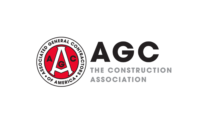Up Front
Do you drywallers out there remember the days, just a few short months ago, when wallboard was as hard to come by as it was expensive? Remember allocation? Those days are over!
Like those fuzzy images of people pushing their cars through mile-long lines to the gas pumps in the ’70s, pricey and hard-to-come-by drywall is now, happily, only a memory.
What happened? As we know, two years ago, thriving new-residential and -commercial markets, as well as a repair and remodeling boom, resulted in record demand. A manufacturer source tells me shipments of board hit 31.2 billion square feet in 1999.
Demand for drywall dropped 6 percent in 2000, the same source reports, equating a dip in new housing starts—from 1.667 million in 1999 to 1.6 million in 2000—and a slowing in new commercial and R&R to board’s reaching a 29.1 billion-square-foot mark the following year.
A distributor in the Midwest tells me that it was right around this time last year that drywall rose to its highest price to the contractor ever: about 30 cents a square foot.
While the price and shortages at their worst may have spelled a frustrating situation to the contractor and end user, U.S. manufacturers—just a few short years after a nationwide recession—had already kicked into gear to alleviate the pain. They ran their plants around the clock, redesigned lines for faster production and added (minus plant closings) more than 8 billion square feet of new capacity, all while actively pursuing R&D, as is evidenced by the number of new products on the market of late.
They also swallowed hard as unprecedented levels of imported board flooded the United States to fill the void.
Now that the void is decidedly filled, even to what some call a glut of product, the price of board is down to about 15 cents to 17 cents a square foot, according to the distributor source. The manufacturer source predicts that U.S. plants will be able to reduce their shifts to a less frantic level and foreign board will remain on its own side of the borders.
This manufacturer projects a slowing economy will cause another dip in demand in 2001, but not at any alarming rate. It forecasts a healthy market, “with 2001 demand at 27.7 billion square feet, down about 5 percent from last year, but still at the fourth highest level historically.”
And fortunately for the walls and ceilings industry, this time everybody is ready.
***
Now for more good news and, unfortunately, some bad.
First, I’m happy to introduce Adrienne Vander Eyk as Walls & Ceilings’ new art director. Addie comes to us from an ad agency, and is a recent graduate of Western Michigan University, where she majored in art and minored in photography. We’re excited to have her with us! Welcome, Addie!
Second, I’m saddened to announce that this month’s Sound Advice column is Jon Mooney’s last. For the last three years, Jon masterfully blended technical expertise with colorful articulation, always resulting in a great read. He says that while a shortage in his schedule dictates his moving away from a regular monthly column, he will contribute the occasional feature. We’re holding you to it, Jon!
Connect with the industry’s leading resource for unparalleled insights and education.
Join thousands of industry professionals today. Shouldn’t you know what they know?
JOIN NOWCopyright ©2024. All Rights Reserved BNP Media.
Design, CMS, Hosting & Web Development :: ePublishing




